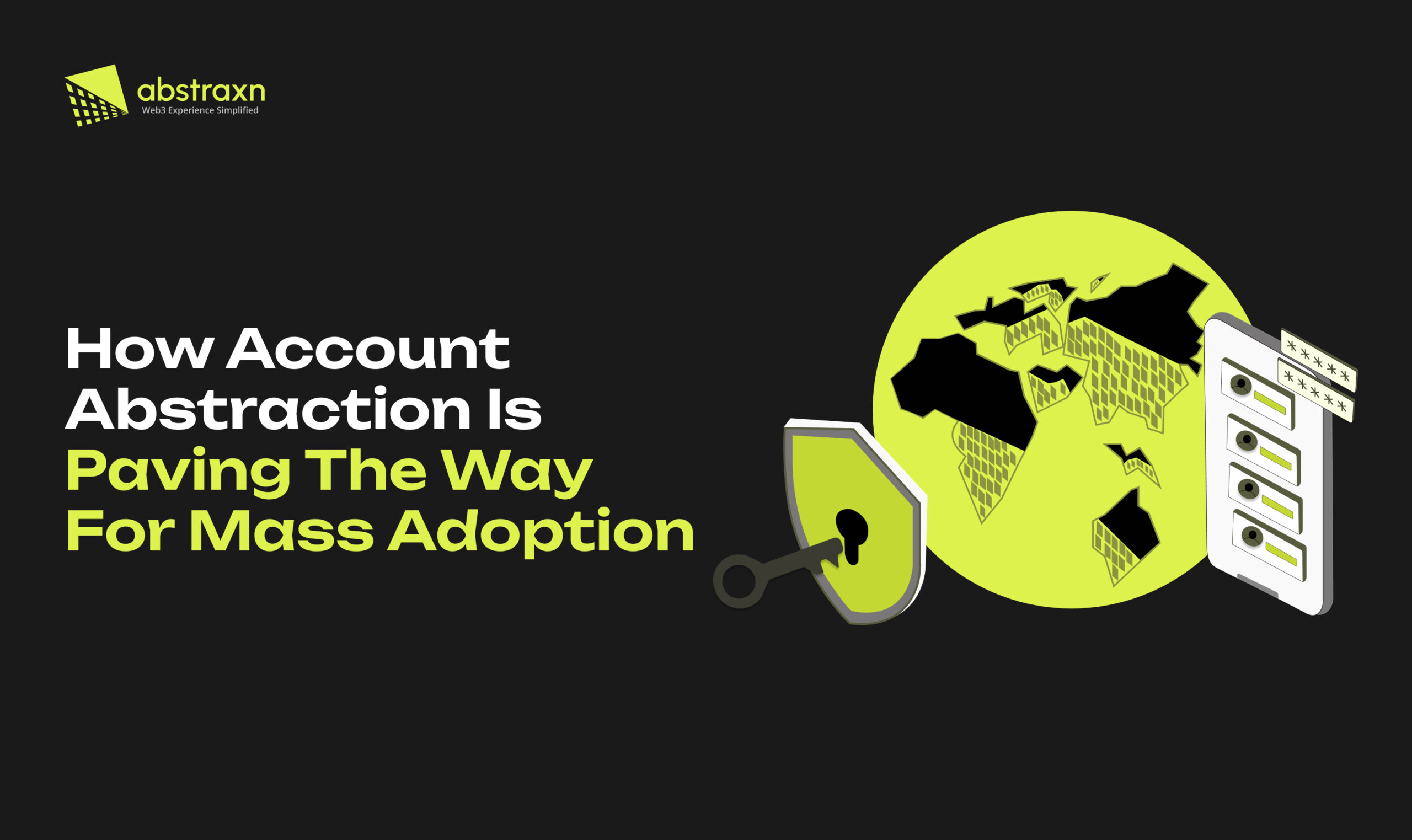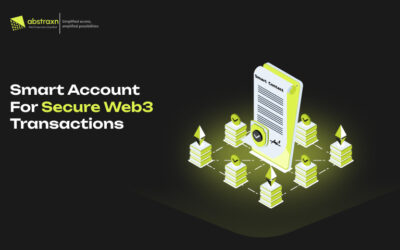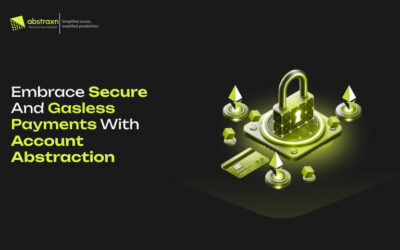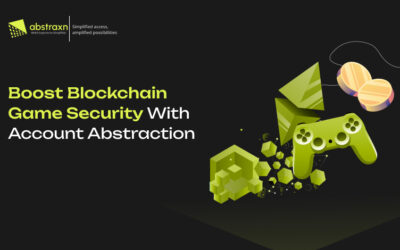When evaluating the adoption of blockchain-based applications (dApps) on Ethereum, a primary obstacle is the complexity of the user experience (UX). To address this issue, Ethereum developers are continuously innovating, with Account Abstraction (AA) emerging as a notable advancement.
Several protocols have successfully integrated AA into their offerings, enhancing user convenience. Let us explore how account abstraction is fostering Web3 adoption through its diverse applications.
Understanding Account Abstraction
Account abstraction is a technology that decouples users’ control over their assets from the execution of smart contracts. This innovation enables users to manage their accounts without engaging in complex manual processes.
Account abstraction significantly enhances the convenience of using crypto wallets. By leveraging AA, users can avoid the need to store private keys, manually sign transactions, and pay gas fees. Instead, these activities are automated through smart contracts.
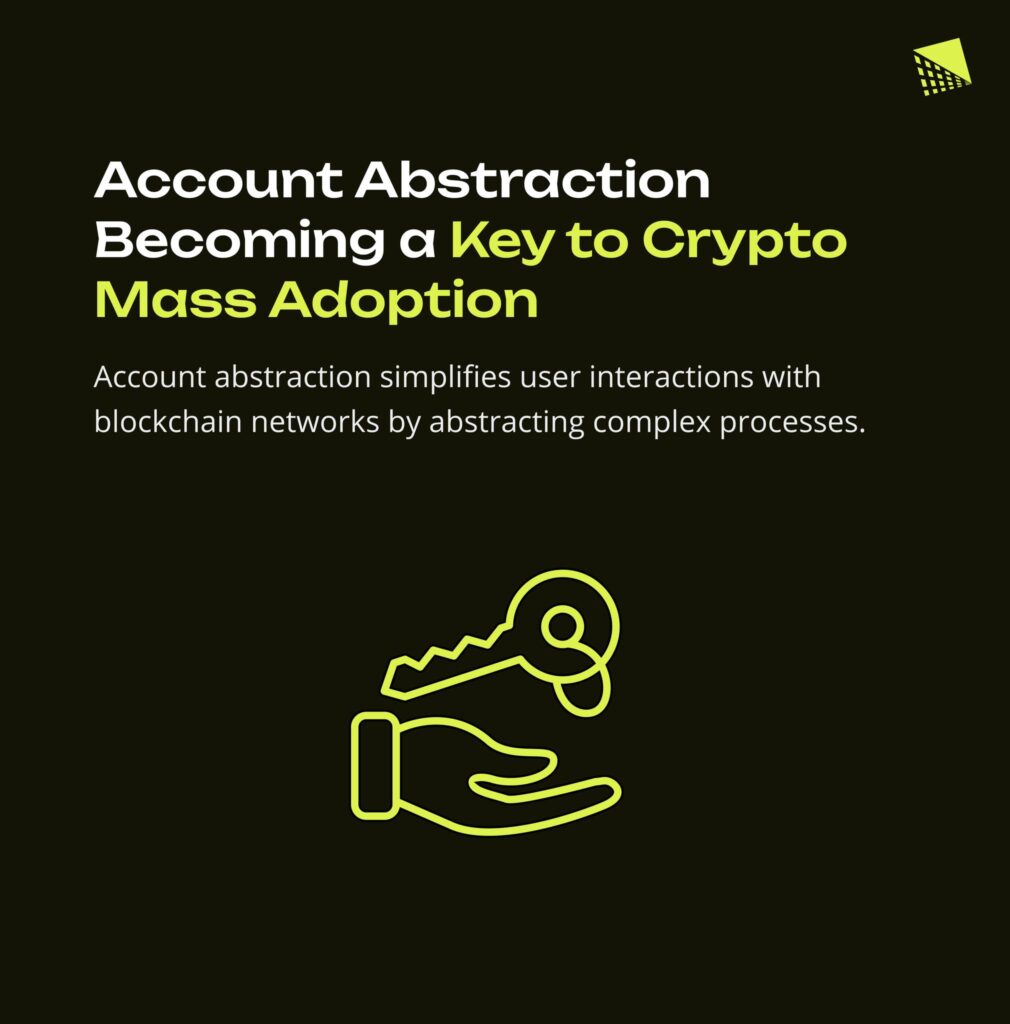
The Current Paradigm
Self-custody wallets are implemented on the chain using either a Contract Account (CA) or an Externally Owned Account (EOA). Both account types enable the sending and receiving of digital assets and allow for interaction with smart contracts. However, both have the following differences:
| Externally Owned Accounts | Contract Accounts | |
|---|---|---|
| Do not require any cost for creation | Require certain cost for creation | |
| Initiate transactions | Only send transactions in response to receiving transactions | |
| Transactions can only be ETH/token transfers | Transactions can trigger different actions, such as transfer tokens or create new contracts | |
| Use public and private key pair to control account activities | Do not have private keys; instead account activities are controlled by smart contract logic | |
| Book intro call with us | ||
Contract accounts are commonly employed for self-custody in multisig wallets that require two or more private keys to sign or approve a transaction, thereby enhancing security. However, this added security makes multisig wallets more complex to set up and less practical for retail users. Each transaction, including simple transfers, must be verified by multiple private keys, making the process labor-intensive. Consequently, multisig wallets are generally used by companies managing large volumes of cryptocurrencies.
EOA wallets necessitate that every transaction on the chain is signed, whereas CA wallets do not rely on keys to initiate transactions. As a result, CAs are not typically considered a great alternative. Regardless of the type, any entity needs to satisfy the following three conditions so it is deemed an account:
- The wallet should hold a balance of digital assets.
- The wallet should utilize nonces to tag transactions, ensuring uniqueness in each transaction.
- The wallet should have a unique address, akin to an email address, serving as its identifier.
Read Also: How Account Abstraction Enhances Security and User Experience in DApps
How Account Abstraction Provides a Solution
Account abstraction effectively addresses several limitations inherent in the EOA model, providing enhanced flexibility and automation in managing user accounts and transactions. Here is how account abstraction resolves the challenges associated with EOAs:
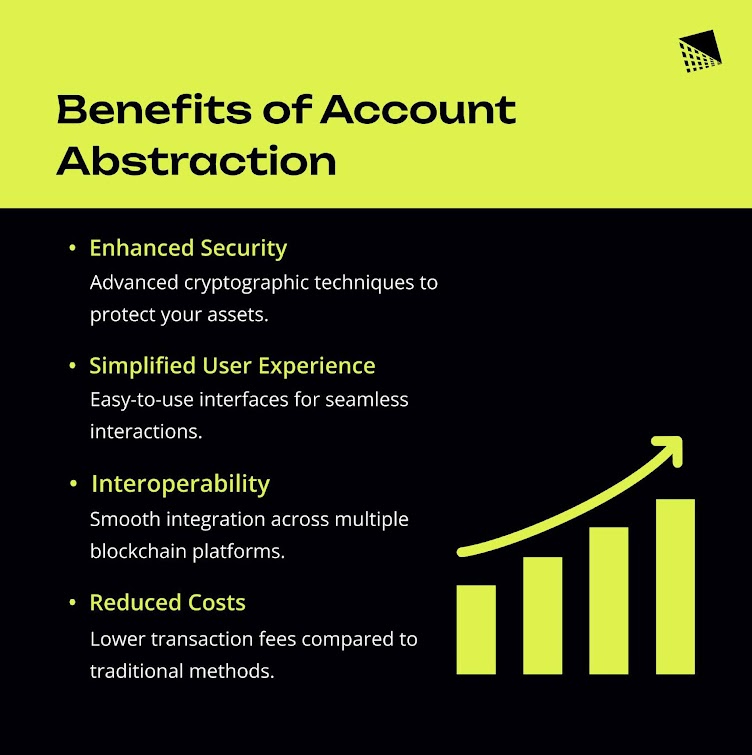
- Enhanced Security
- Improved User Experience
- Customizable Transaction Logic
- Reduced Gas Fees
- Recovery Mechanisms
- Enhanced Interoperability with dApps
EOAs depend on a single private key for access and transaction signing, which poses significant security risks if the key is lost or compromised. Account abstraction mitigates this risk by supporting multiple authentication methods, thereby enhancing overall security.
In the EOA model, users must manually sign each transaction and cover gas fees. Account abstraction automates these processes through smart contracts, creating a more seamless and user-friendly transaction experience.
EOAs have a rigid structure for transaction approval. Account abstraction allows developers to create custom transaction approval rules, such as multi-signature requirements or conditional transactions, tailored to specific user needs.
Account abstraction can consolidate multiple transactions into a single one, optimizing gas usage and reducing costs, which is particularly advantageous for users conducting numerous transactions.
EOAs lack built-in recovery options if the private key is lost. AA enables the implementation of various recovery mechanisms, such as social recovery or multi-factor authentication, thereby improving account resilience.
Account abstraction facilitates smoother interactions with decentralized applications (dApps) by enabling more complex and automated transaction workflows, enhancing the overall user experience with dApps.
By addressing these limitations, Account Abstraction not only bolsters security and usability but also promotes broader adoption of blockchain technology and decentralized applications.
Account Abstraction Adoption in the Web3 Space
Account abstraction is designed to simplify the user experience associated with wallets and blockchain technology, offering a more intuitive interface for interacting with Web3 applications (dApps). By enhancing usability, account abstraction web3 significantly contributes to the wider adoption of blockchain technology and crypto assets.
Account abstraction serves as a fundamental pillar, providing substantial potential to boost user adoption by creating seamless application experiences. By focusing on improving the end-user experience, account abstraction-driven projects aim to extend the reach of blockchain technology into practical, real-world applications. Below are some examples of products that have successfully implemented account abstraction:
- Lens Protocol
- Safe Wallet
- Visa
- dYdX
Lens Protocol is a social media platform that has integrated web3 account abstraction to enhance user experience. Traditionally, all activities within Lens-supported applications, such as posting, commenting, and updating profile metadata, occur on-chain. This requires users to approve each transaction and pay the associated gas fees.
To address this usability challenge, the Lens team introduced AA via a feature called the dispatcher. This tool allows users to delegate their signing rights to the dispatcher, which also covers the gas fees on their behalf.
As a result, users can engage with dApps without the need to continually approve transactions or hold native tokens (ETH) for gas fees.
Safe Wallet is a smart contract wallet that incorporates the ERC-4337 standard and signature abstraction for efficient transaction management.
As of May 2023, Safe Wallet’s smart contract has been rigorously tested, handling transactions worth approximately $35 billion on the Ethereum mainnet. This robust performance has earned the trust of users and other projects, including Nest and Worldcoin, positioning Safe Wallet as their preferred choice.
Additionally, Safe Wallet is piloting a social login feature via Google or Apple ID. This innovation enables users to create and access wallets with the same ease as interacting with their Google or Apple accounts, effectively eliminating the need to remember seed phrases.
Visa has introduced a solution that facilitates the real-world application of auto payments for self-custodial wallets. In this system, users are not required to initiate a payment request for every on-chain transaction.
Instead, the wallet can process recurring payments based on pre-defined conditions. Users retain full control over their wallets while approving automatic payments for specific subscription bills.
This app simplifies the setup of programmable payment instructions, unlocking potential real-life applications. By removing the complexity of manual transactions, this solution offers practical benefits, enabling users to organize payments more efficiently.
In the DeFi sector, dYdX, a leading platform for perpetual trading, has integrated Biconomy’s services to enhance accessibility for its users. By utilizing Biconomy’s SDK, dYdX addresses the common challenge of gas fees, which can be a significant barrier for users.
When a user submits a transaction on the dYdX platform, the Biconomy SDK directs the fee payment to a paymaster, which covers the fee on the user’s behalf. This integration effectively eliminates gas fees as an obstacle, streamlining the user experience.
Read Also: Smart Wallets of the Future: AI and Account Abstraction in Web3
To Sum Up
It is crucial to understand that technology must undergo a process of evolution before it can achieve its full potential. While account abstraction web3 is currently regarded as a significant factor in driving mass adoption, it remains an emerging technology that is still undergoing validation. Potential issues may arise as it continues to develop, and it has not yet reached full maturity. Therefore, if you are considering integrating account abstraction into your service, it is essential to stay informed about ongoing research and advancements in this area and collaborate with experienced developers who have a strong background in working with this technology.

